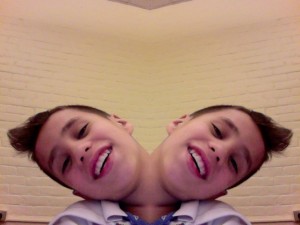When reading Harper and de Jong’s article on misconceptions about teaching ELL students, I got increasingly frustrated with what I perceived to be an overbearing repetitiveness of theme: Teaching content and teaching language skills are separate processes. I agree with the authors we read for this week about directly addressing the language learning needs of our students by taking on the role of English teacher even when teaching other content areas. The distinction Harper and de Jong make between learning a first language and learning a second language was something I had never considered before, at least explicitly. When kids learn their first language, they are just that: kids. They have the language skills of kids, but they also have the critical thinking ability of kids and life experiences of kids. ELL students are in a much different head space than little kids, and too often that isn’t recognized.
While I appreciated all of these points that they were making, I got frustrated that they seemed to address WHAT the problem is without discussing HOW to solve it. The recommendations they give are all theoretical. They say things like, “Teachers should include ways to reduce the language demands for ELLs (i.e. provide comprehensible input) while simultaneously providing opportunities for ELLs to develop the neccessary academic language skills” (158). Good to know, but what does that actually look like in the classroom? They say, “Teachers need to be aware of common writing errors for ELLs, such as problems with verb tenses, plural and possessive forms of nouns, subject/verb agreement, and the use of articles” (155). Even though they get more specific here, communicating common errors for ELL students, I’m left with more questions than answers. Which first languages correspond most often to which errors? What do we do with this awareness? I don’t mean to trash the article, but I think the authors stop one step short. They raise awareness of a problem, and then give theoretical solutions to that problem without getting into the tangible practical solutions. Leaving this article, I initially thought, “Wow, I feel like I know a lot more about teaching ELL students now than I did before.” Pretty quickly, though, I realized I hadn’t fully learned anything. I had a lot of great theories, but no idea how to actually put them into practice. This is something I feel about a lot of critical texts in education. Sometimes it feels like we identify a problem and figure out theoretical solutions, but we stop there. This kind of discussion gives the illusion of being prepared for the demands of the classroom, but don’t actually equip us with anything we can really use.
I was thrilled to find a wealth of more practical solutions geared toward helping ELL students in chapter 8 of our Adolescent Literacy book. In that chapter, the editors and authors bring up the specific problems they have faced, discuss theoretical solutions, and then follow that up with real examples, diagrams, and figures.I wonder whether the chapter is more grounded because it is written by multiple authors in a dialogue. They don’t get a chance to over-talk anything, because the other contributors are right there to push the conversation forward or offer a fresh perspective.
Ultimately, chapter 8 is something I will definitely return to if/when I have ELL students in my classroom. Misconceptions About Teaching English-language Learners, on the other hand, feels like it has no more to offer me.


